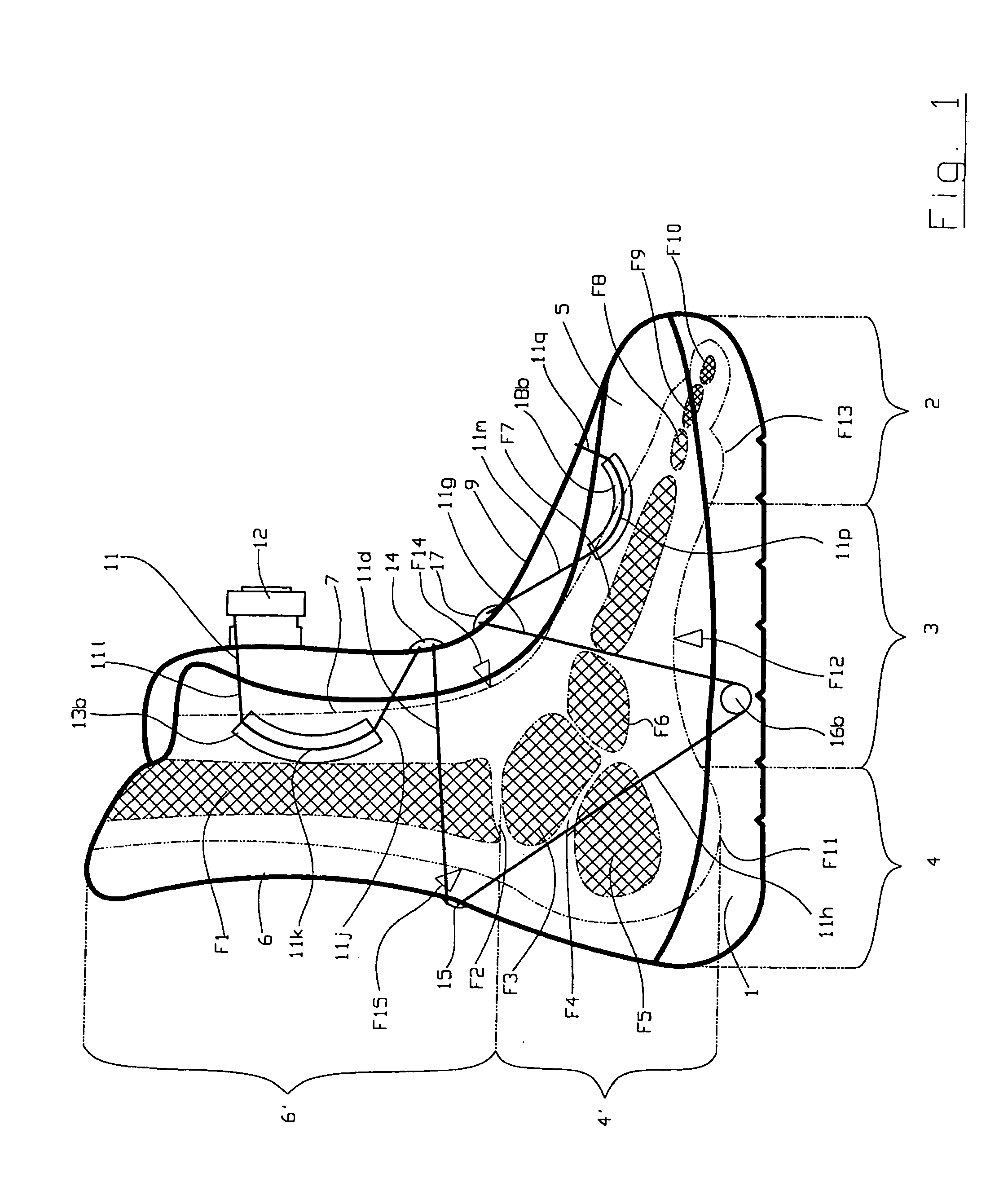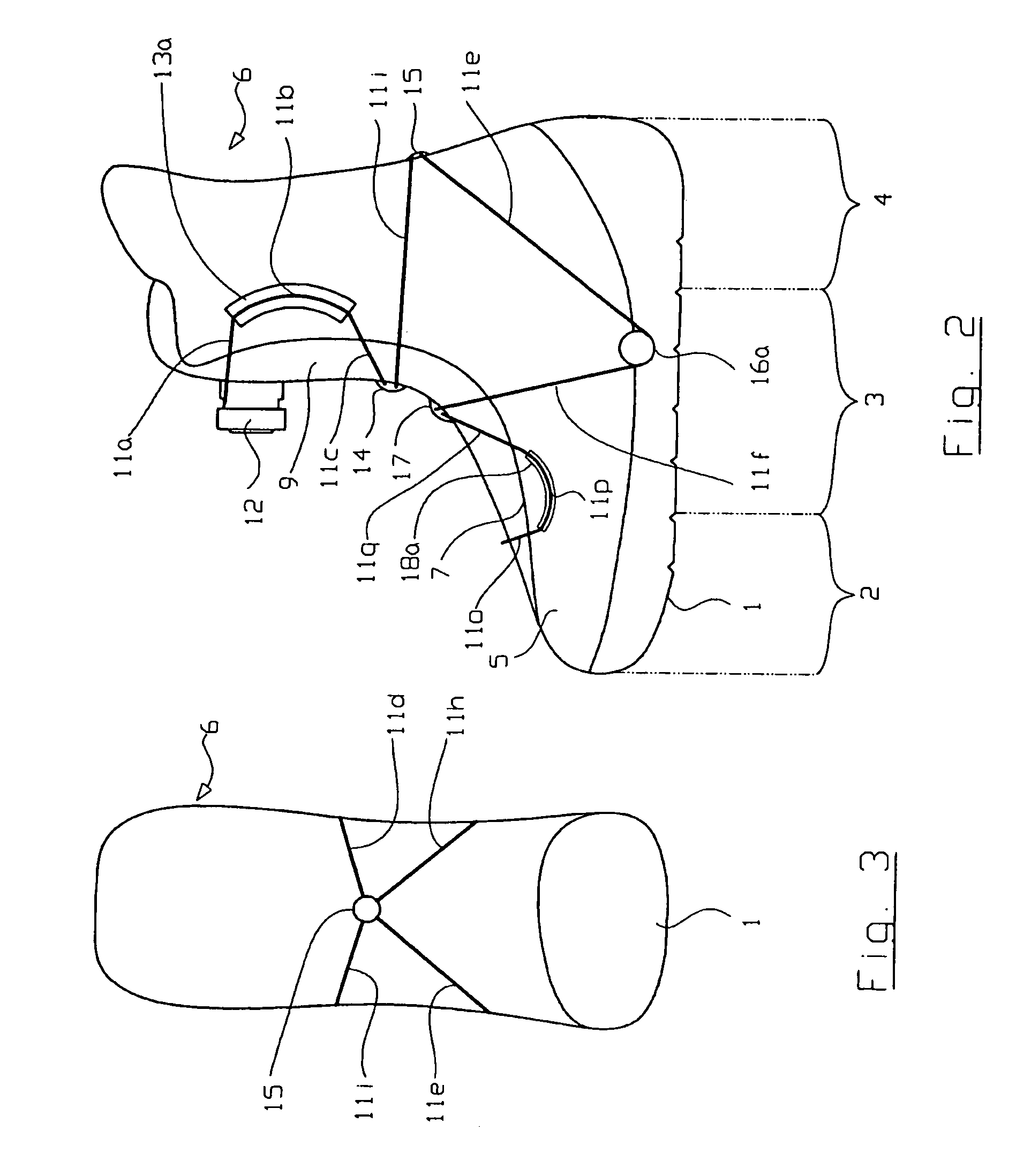Laced boot
a technology of laced boots and laced soles, which is applied in the field of laced boots, can solve the problems of limiting comfort, affecting circulation in the foot, and requiring a greater industrial cost, and achieves the effects of good comfort, simple manipulation, and good hold of the foo
- Summary
- Abstract
- Description
- Claims
- Application Information
AI Technical Summary
Benefits of technology
Problems solved by technology
Method used
Image
Examples
Embodiment Construction
[0027]This application claims priority from German application 103 11 175.1, filed Mar. 12, 2003, the entire disclosure of which is expressly incorporated herein by reference.
[0028]FIG. 1 is referred to at first, in which a foot F is schematically shown in a side view. The essential bones of the foot are shinbone F1 to which anklebone F3 is connected via upper ankle joint F2, followed, from the top downward, by heel bone F5 via lower ankle joint F4. Following lower ankle joint F4 the foot consists via navicular bone F6 and metatarsal bone F7 of toe bones, namely, a base toe member F8, a middle toe member F9 and a terminal toe member F10. Joints are also present between the last-named bones but are not shown. In the area of the foot sole a heel area F11 can be distinguished located below heel bone F5 and convexly curved to the outside in a lateral view, a metatarsal area F12 located below navicular bone F6 and below metatarsal bone F7 and concavely curved inward as well as a front fo...
PUM
 Login to View More
Login to View More Abstract
Description
Claims
Application Information
 Login to View More
Login to View More - R&D
- Intellectual Property
- Life Sciences
- Materials
- Tech Scout
- Unparalleled Data Quality
- Higher Quality Content
- 60% Fewer Hallucinations
Browse by: Latest US Patents, China's latest patents, Technical Efficacy Thesaurus, Application Domain, Technology Topic, Popular Technical Reports.
© 2025 PatSnap. All rights reserved.Legal|Privacy policy|Modern Slavery Act Transparency Statement|Sitemap|About US| Contact US: help@patsnap.com



